Pawai Bay Snorkeling: Hawaii’s Secret Underwater Paradise
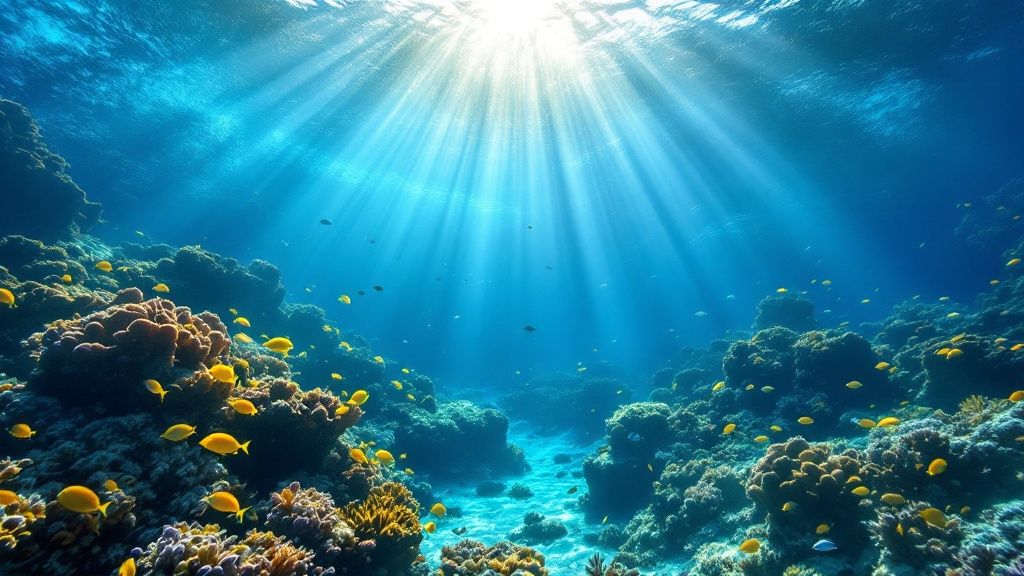
The Untouched Wonder of Pawai Bay
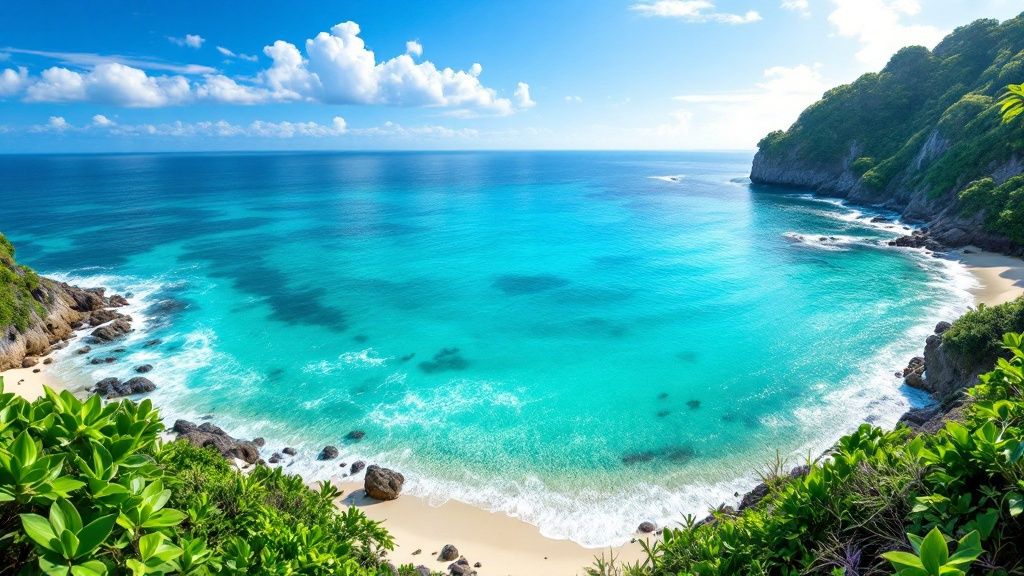
Pawai Bay, nestled along the Kona coast of Hawaii's Big Island, offers a truly exceptional snorkeling experience. This secluded bay is a hidden gem, far removed from the crowds of more popular snorkeling spots. Its untouched beauty and unique underwater environment make it a must-see for anyone seeking tranquility and a genuine connection with nature.
Crystal-Clear Waters and Thriving Coral Gardens
One of Pawai Bay's most striking features is the remarkable clarity of its waters. Visibility often reaches hundreds of feet, allowing snorkelers to fully appreciate the vibrant colors and intricate details of the coral reefs below.
This exceptional clarity, coupled with the bay's protected status, has allowed the coral gardens to flourish. Unlike busier snorkeling destinations, the coral here remains healthy and vibrant, providing shelter for a wide variety of marine life. This creates a truly immersive experience, giving you the feeling of exploring a secret underwater world.
A Secluded Sanctuary for Marine Life
Pawai Bay offers a special snorkeling experience thanks to its secluded location and abundant marine life. Unlike crowded spots like Hanauma Bay on Oahu, only a small number of visitors snorkel in Pawai Bay each day.
This exclusivity, combined with its incredibly clear water, makes it perfect for those seeking a peaceful snorkeling adventure. Learn more about snorkeling in Pawai Bay. The limited access plays a vital role in preserving the bay's pristine condition and protecting the health of its marine ecosystem.
The Geology Behind the Magic
The bay's unique geological formations enhance its exceptional snorkeling conditions. The volcanic rock coastline creates sheltered coves and channels, providing diverse habitats for marine life.
These natural formations also shield the bay from strong currents and waves, resulting in calm, clear waters ideal for snorkeling. This makes Pawai Bay accessible to snorkelers of all skill levels, from beginners to experienced enthusiasts. The striking lava rock formations add to the bay's beauty, both above and below the surface. The combination of geological wonders and pristine waters makes Pawai Bay a truly remarkable place to explore.
Underwater Encounters: Pawai Bay's Living Treasures
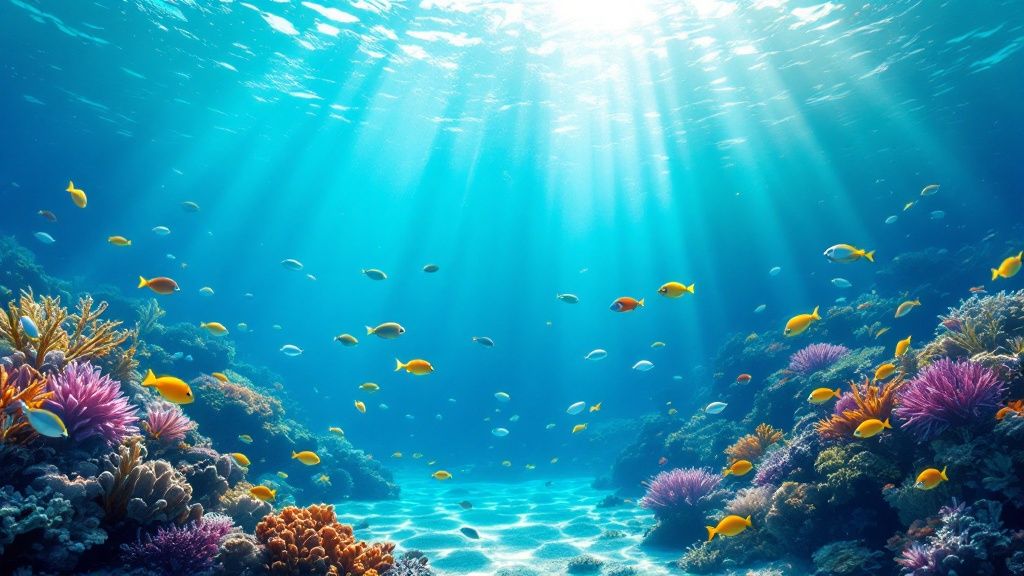
The real magic of snorkeling in Pawai Bay lies beneath the waves. This isn't just a picturesque place to take a dip; it's a vibrant ecosystem teeming with life. Exploring this underwater world offers a rare chance to observe marine creatures in their natural habitat. From brightly colored reef fish to graceful sea turtles, there's a constant stream of activity to witness.
Resident Species: Year-Round Wonders
Pawai Bay boasts a fascinating array of resident species, viewable throughout the year. These creatures contribute to the bay's enduring appeal. Vibrant butterflyfish dart among the coral heads, while curious yellow tangs often approach snorkelers. You might also encounter Hawaii's state fish, the reef triggerfish (humuhumunukunukuapua'a), instantly recognizable by its unique shape and vivid colors.
Seasonal Visitors: A Changing Landscape
Pawai Bay's underwater scenery transforms with the seasons, welcoming a variety of visitors throughout the year. Certain months bring the majestic manta rays, whose graceful ballet captivates all who are lucky enough to witness it. Depending on your timing, you'll experience entirely different marine life encounters. For other exciting activities, you might be interested in the Kona Snorkel Trips sitemap.
Rare Encounters: Lifelong Memories
While the regular residents and seasonal visitors are a sight to behold, Pawai Bay also offers the potential for truly special encounters. These rare sightings etch themselves into memory. Imagine a sudden appearance by a pod of dolphins, their playful energy infusing your snorkeling adventure with magic. These unexpected moments are what truly set Pawai Bay apart.
Microhabitats: Supporting a Diverse Ecosystem
Pawai Bay’s unique location and protected status have allowed for a diverse range of microhabitats to flourish. From shallow, vibrant coral gardens to deeper channels where larger species roam, the bay supports a complex web of life. This variety keeps things interesting, offering new discoveries with every visit. The bay’s protected status is essential for preserving these fragile ecosystems.
To help illustrate the variety of marine life and when best to see it, the following table provides a quick overview.
Common Marine Life at Pawai Bay
Comparison of marine species typically found at Pawai Bay throughout different seasons.
| Marine Species | Frequency of Sightings | Best Time of Year | Viewing Tips |
|---|---|---|---|
| Reef Triggerfish (Humuhumunukunukuapua'a) | Common | Year-round | Look around coral heads and shallow reefs. |
| Butterflyfish | Common | Year-round | Observe near coral formations. |
| Yellow Tang | Common | Year-round | Often approach snorkelers in shallow areas. |
| Manta Ray | Seasonal | Varies, check local guides | Evening snorkeling tours are often best. |
| Dolphins | Rare | Varies, unpredictable | Keep an eye out in open water. |
| Sea Turtles | Occasional | Year-round | Often found near reefs and seagrass beds. |
This table summarizes the typical sightings and offers tips to enhance your snorkeling experience. Remember that nature is unpredictable, and sightings can vary.
Enhancing Your Snorkeling Experience
Understanding the behavior of marine life can enrich your Pawai Bay snorkeling trip. Many species display specific behaviors based on the time of day or tides. Learning about these patterns will improve your chances of witnessing fascinating interactions. Some fish are most active at dawn and dusk, while others prefer daylight hours.
Photography Tips: Capturing the Beauty
Photographing Pawai Bay's marine life requires both respect and patience. Avoid using flash, as it can disturb the animals and harm their sensitive eyes. Maintain a safe distance to prevent accidental contact or disrupting their natural behavior. By following these simple guidelines, you can capture stunning images while preserving the underwater world. Sharing the beauty of Pawai Bay with others while respecting its delicate balance is key.
Safety First: Navigating Pawai Bay Like a Pro
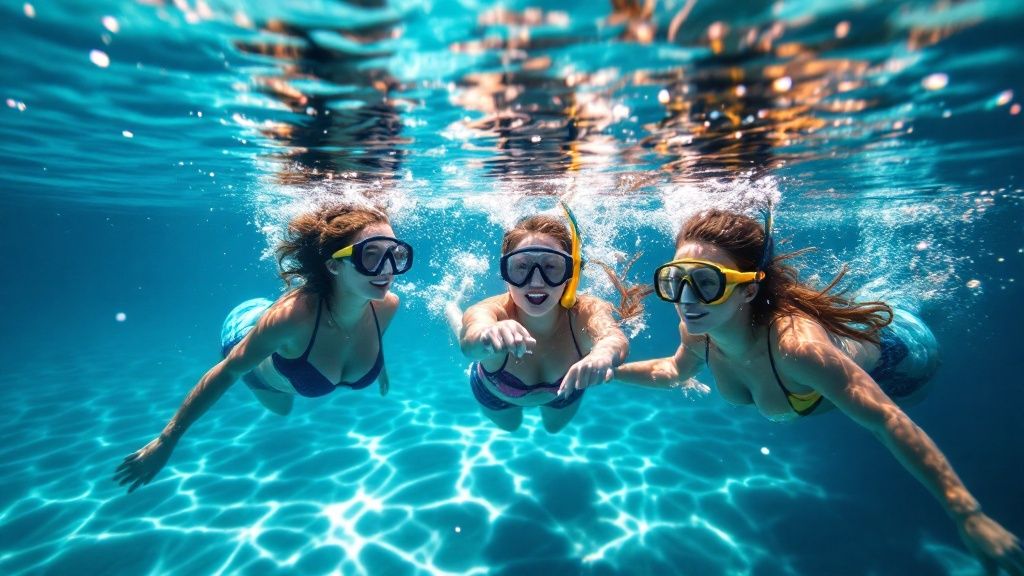
Pawai Bay, with its alluring turquoise waters, offers a remarkable snorkeling experience. However, like any natural setting, it demands respect and awareness. A safe and enjoyable adventure hinges on understanding the bay's distinct features and inherent hazards.
Understanding Pawai Bay's Mood Swings
Pawai Bay’s conditions can transform dramatically throughout the day. Mornings often present calm, clear waters, perfect for those new to snorkeling. However, afternoon winds can whip up choppier waters and stronger currents. Checking the weather forecast is crucial before venturing out.
It's also important to recognize signs of changing weather while in the water. A sudden gust of wind or increasing cloud cover could signal an approaching squall. For more information on snorkeling safety, you can visit our sitemap.
Safe Entry and Exit Points
Selecting appropriate entry and exit points is vital for all snorkelers. Rocky terrain and shifting currents can create dangerous situations. This is especially true in Pawai Bay where safe access points may not be obvious.
Always consult local experts or guides for recommendations on the best areas to enter and exit. This precaution can significantly reduce your risk of injury.
Essential Equipment and Communication
Having the right gear is fundamental for a safe snorkeling trip in Pawai Bay. A well-fitting mask, snorkel, and fins ensure comfort and ease of movement in the water. A brightly colored flotation device enhances visibility and offers support if needed.
When snorkeling with a companion, pre-arranged communication is essential. Simple hand signals can effectively relay crucial information underwater, such as "okay," "I need help," or "let's return."
Knowing When to Exit
Snorkeling in Hawaii, including Pawai Bay, is a popular activity, but it carries inherent risks. According to the State Department of Health, over 128 visitors have drowned while snorkeling in Hawaiian waters since 2005. This sobering statistic emphasizes the critical importance of safety. More detailed statistics can be found here.
Recognizing when to leave the water is paramount. Strong currents, unexpected weather changes, fatigue, or any sense of discomfort signal the need to return to shore. Never hesitate to end your snorkeling trip early if conditions worsen; your safety is always the top priority.
Snorkeling Safety Tips for All Experience Levels
These tips are relevant for everyone, from beginners to seasoned snorkelers:
- Never snorkel alone: Always have a buddy, regardless of how calm the conditions appear.
- Stay within designated areas: Don't venture into unfamiliar or restricted zones.
- Be mindful of marine life: Respect the environment and keep a safe distance from marine life. Avoid touching coral or other marine organisms.
- Sun protection is key: Apply reef-safe sunscreen and consider a rash guard or wetsuit.
- Stay hydrated: Drink plenty of water before, during, and after snorkeling.
By following these guidelines and respecting the ocean's power, you can enjoy a safe and memorable experience in Pawai Bay. This knowledge will help you appreciate the bay's beauty while minimizing any potential risks.
Physical Readiness For Pawai Bay Exploration
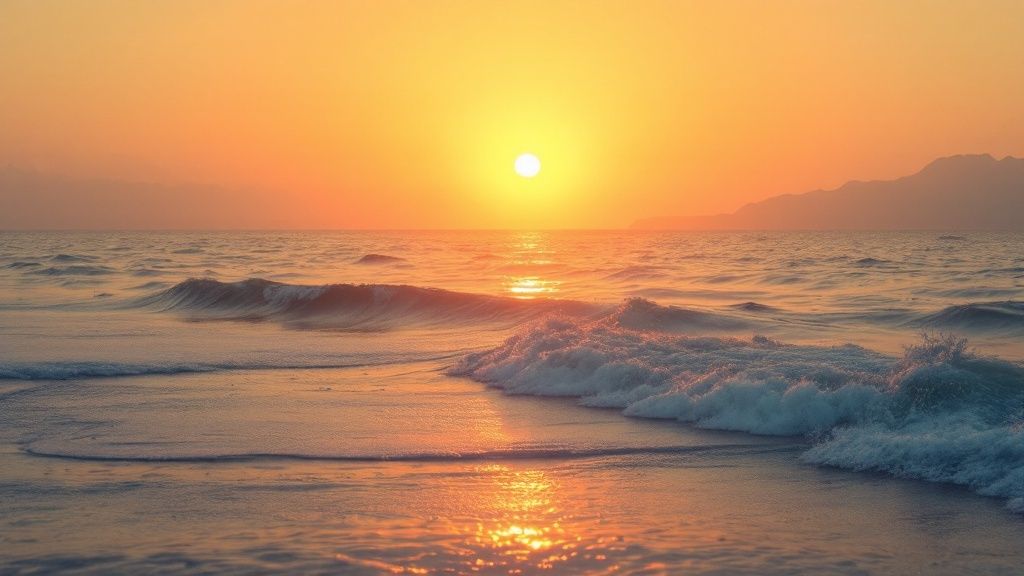
Pawai Bay's tranquil waters offer a tempting invitation to snorkelers. However, a safe and enjoyable experience hinges on understanding your personal physical capabilities. Honest self-assessment and proper preparation are key. This extends beyond basic swimming proficiency and includes understanding the specific physical demands of snorkeling in Pawai Bay.
Cardiovascular Demands of Open Water Snorkeling
Snorkeling in open water environments like Pawai Bay presents unique cardiovascular challenges. It can be compared to a sustained gentle jog, but with added water resistance. This enjoyable resistance requires stamina. Navigating currents or maintaining a comfortable pace while exploring the reef can become tiring without proper preparation. Being in good cardiovascular health before entering the water is crucial.
Recognizing Fatigue: Your Body’s Early Warning System
Fatigue plays a significant role in snorkeling incidents. Its subtle signs can be easily overlooked amidst the excitement of exploration. Staying attuned to your body’s signals is vital. Lightheadedness, shortness of breath, and muscle cramping are all indicators of the need for rest. Ignoring these warnings can lead to more serious problems. Knowing your limits is as crucial as testing them.
Snorkeling Safety in Hawaii
While specific Pawai Bay incident statistics aren't readily available, the broader context of snorkeling safety in Hawaii provides valuable insights. A recent study reveals that snorkeling fatalities in Hawaii often involve factors beyond simple water inhalation, underscoring the need for comprehensive safety measures. Furthermore, data indicates a significant link between heart conditions and snorkeling-related deaths in Hawaii, with many occurring in shallow water. For more in-depth information on this, check out this article: Causes of Snorkeling Deaths in Hawaii. Respecting your physical limitations is paramount for a safe snorkeling experience.
Practical Conditioning and Hydration
Preparing for snorkeling doesn't require rigorous training. Simple steps can make a noticeable difference. Regular swimming, even in a pool, helps build cardiovascular strength and endurance. Practicing floating and finning techniques improves efficiency in the water, conserving energy. Hydration is also essential. Start hydrating 24 hours before your snorkel. Dehydration increases the risk of cramping and fatigue.
Considerations For Multi-Generational Groups
Pawai Bay snorkeling is an activity for all ages, but tailoring the experience to individual fitness levels is crucial. For groups with varying abilities, begin with shorter sessions in shallower waters. This allows less experienced or less fit individuals to acclimate. Gradually increase duration and depth as comfort levels improve. Open communication about everyone’s comfort is key to a fun and safe experience for all. For further planning resources, you might find our sitemap helpful: Our Page Sitemap.
Pre-Existing Conditions and Precautions
If you have pre-existing health conditions, especially heart or respiratory issues, consult your doctor before snorkeling. They can provide tailored advice and assess the suitability of Pawai Bay snorkeling for you. Be honest about your abilities, choose calm conditions, and never hesitate to take breaks or end the snorkel early if needed. Preparation and respecting your limits enhances both enjoyment and safety while exploring Pawai Bay's wonders.
Accessing Paradise: Your Pawai Bay Entry Guide
Pawai Bay's secluded beauty is a big part of its charm. However, this also means getting there requires a bit of pre-planning. Reaching this pristine snorkeling spot presents unique opportunities and challenges. This guide will walk you through the various entry options so you can pick the method that best suits your snorkeling style and comfort level.
Choosing Your Path: Boat Tours vs. Shore Entry
There are two main ways to experience Pawai Bay snorkeling: guided boat tours and shore entry. Your choice will significantly impact your overall experience, influencing factors such as cost, accessibility, and how much time you actually spend in the water.
Boat tours offer unparalleled convenience. Tour operators handle all the logistics, from transporting you to the bay to providing snorkeling gear. This is especially helpful for those new to the area or looking for a stress-free experience. Keep in mind, however, that convenience often comes with a higher price tag.
Shore entry offers greater flexibility, although it can be more challenging. You can explore at your own pace,不受 tour schedules. This independent approach requires careful planning. You’ll need to find suitable access points, which may involve a hike, and make sure you have the necessary equipment. Respectful parking and following local etiquette are also crucial considerations.
Understanding the True Costs
When evaluating costs, look beyond the advertised price of a boat tour. Factor in hidden costs such as transportation to the harbor, parking fees, and potential tips for the crew. Shore entry may seem free, but expenses like equipment rental (if needed) and transportation to the access point should be considered. Learn more in our article about Kona Snorkel Trips.
Navigating Local Etiquette and Cultural Significance
Pawai Bay holds deep cultural significance for the local community. Respecting this is essential. Observing proper etiquette, like parking only in designated areas and respecting private property, demonstrates consideration for local residents and the bay's cultural heritage. Guided boat tours often offer insights into these cultural nuances, adding depth to your snorkeling adventure.
Timing is Everything: Maximizing Your Pawai Bay Experience
The time of day significantly impacts your snorkeling experience in Pawai Bay. Mornings typically offer calm, clear waters – perfect for underwater photography and optimal visibility. Afternoons can be windier, but may bring different marine life to the shallows, creating fresh exploration opportunities. Boat tours follow set schedules, whereas shore entry allows you to tailor your snorkeling time.
To help you choose the best access method for your Pawai Bay adventure, we've put together a handy comparison table:
Pawai Bay Access Options Comparison: This table summarizes the advantages and disadvantages of each entry point, so you can make an informed decision based on your needs and preferences.
| Access Method | Cost Range | Difficulty Level | Pros | Cons |
|---|---|---|---|---|
| Guided Boat Tour | $75 – $150+ | Easy | Convenient, Gear provided, Local insights | Less flexible, Higher cost |
| Shore Entry | Varies (equipment rental, transportation) | Moderate to Challenging | Flexible, Independent exploration, Lower cost | Requires more planning, Potentially difficult access |
As you can see, each option presents unique trade-offs. Boat tours are convenient but pricier, while shore entry is budget-friendly but requires more legwork.
By understanding the logistics, costs, and cultural considerations of each access option, you can plan a Pawai Bay snorkeling trip that is both enjoyable and respectful of this extraordinary environment. Careful planning and awareness are key to unlocking the bay's full potential and making lasting memories.
Perfect Timing: When to Experience Pawai Bay
Timing is everything when it comes to making the most of your Pawai Bay snorkeling adventure. Understanding the bay's natural rhythms, from seasonal shifts to daily weather patterns, can elevate your trip from enjoyable to truly extraordinary. This guide will help you plan your visit for optimal conditions and unforgettable encounters with marine life.
Seasonal Wonders: Targeting Specific Marine Life
Pawai Bay’s underwater world transforms throughout the year. Seasoned snorkelers often plan their visits around specific weeks or months to encounter particular marine life. For instance, certain times are better for spotting manta rays, while others might be ideal for observing migrating whales. Understanding these seasonal variations allows you to tailor your trip to your interests. You might be interested in: Our blog post sitemap for more related information.
Moon Phases: Influence on Visibility and Behavior
Even the moon plays a significant role in the Pawai Bay experience. Moon phases affect both water visibility and the behavior of marine animals. During a full moon, nocturnal creatures might be more active, presenting unique nighttime snorkeling opportunities. Conversely, some fish species display different behaviors during new moon phases. Factoring in lunar cycles when planning can significantly enhance your chances of witnessing specific marine activity.
Ideal Months: Balancing Conditions and Activity
Certain months offer the perfect blend of pleasant weather and peak marine activity. These "sweet spots" typically combine calm seas, excellent visibility, and the presence of diverse marine species. However, the best time to visit also depends on your personal preferences. Do you prioritize calm waters or encountering specific marine life? Researching typical conditions during different months will help you align your trip with your priorities.
Weather Wisdom: Interpreting Forecasts for Pawai Bay
Learning to interpret weather forecasts specifically for Pawai Bay is crucial for planning your snorkeling trip. Wind direction and speed can significantly impact water conditions, changing a calm morning into a choppy afternoon. Understanding local weather patterns is essential for making informed decisions about when to enter the water. Local knowledge can be invaluable.
Morning vs. Afternoon: Two Different Worlds
Pawai Bay offers distinct snorkeling experiences depending on the time of day. Morning typically brings calmer waters and better visibility, ideal for observing the intricate details of the coral reefs. Many fish species are also most active in the morning. However, afternoon sessions have their own charm. The changing light can create dramatic underwater scenes, and different marine creatures may appear in shallower waters.
Rain Patterns and Water Clarity: A Seasonal Perspective
Seasonal rain patterns can influence water clarity in Pawai Bay. Heavy rainfall can cause runoff, temporarily reducing visibility. Understanding these patterns helps you avoid disappointment and select a time when the water is clearest. This information is especially helpful when planning a trip well in advance.
Maximizing Your Chances of Perfect Conditions
While we can't control the weather, careful planning can maximize your chances of experiencing Pawai Bay at its best. By considering seasonal trends, moon phases, and daily weather forecasts, you can increase your likelihood of enjoying those magical, perfect-condition days that create lasting memories. Flexibility is also essential, as conditions can change rapidly. Being prepared to adjust your plans will ensure you get the most out of your Pawai Bay snorkeling adventure. Ready to experience the magic of Pawai Bay? Book your unforgettable snorkeling adventure with Kona Snorkel Trips today! Explore our tours and book your adventure now!
